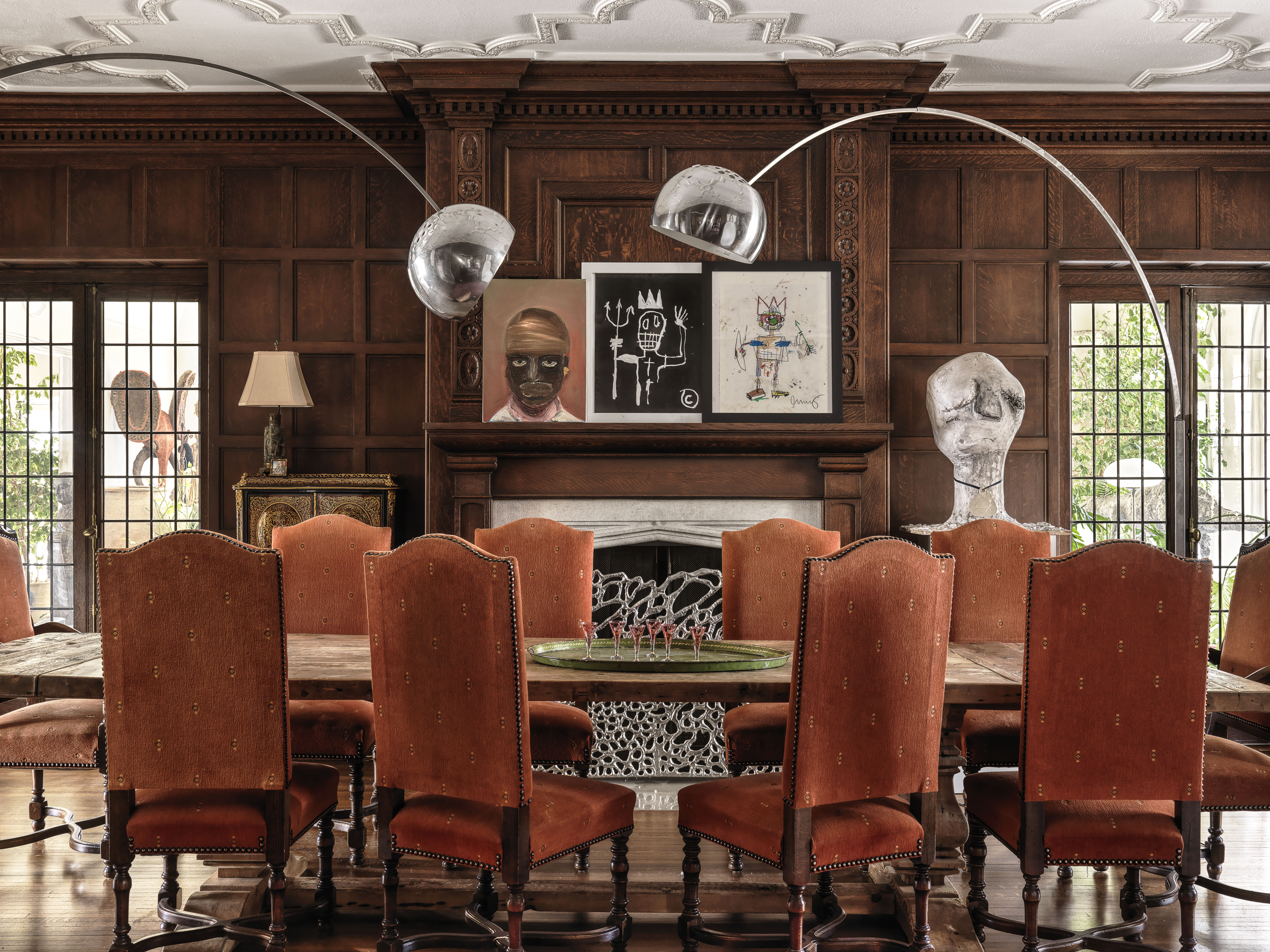
Elizabeth Fazzare: How did you begin to build your own collection?
Susan Barrett: Collecting has always been a part of my life, from swapping art with my grade school classmates to buying work made by my studio mates in college. About ten years ago, I began collecting with greater intention. This shift began with the purchase of two small Lynette Yiadom-Boakye portraits, while I was attending an art fair. The paintings were small, within my budget and hauntingly beautiful. I was ultimately drawn to them because they were the kind of painting I had always wanted to create.
EF: What pieces inspired you to continue?
SB: I quickly found that art collecting is truly addictive. From the moment I purchased those two Lynette portraits and left the fair, I couldn’t stop thinking of the paintings I had seen in the booth. I called Laura Gowan—the gallerist who represented Lynette at the time—from the cab to see if the larger painting that I had initially passed up was still available. I just couldn’t leave it behind and I was determined to find a way to fit it within my budget. Luckily, the larger painting was still available and Laura was willing to work with me to acquire it. I’ve been collecting Lynette’s work ever since. The thrill of searching for those special works that become inseparable parts of your emotion and memory continues to propel me forward in collecting.

EF: What designers/artists are inspiring you right now?
SB: I was struck by a statement that artist Marilyn Minter made that the market and museums will change when women (and minorities) start collecting. To me, it meant that if we want to see more art by women in museums, we need to actually buy art by women. This was a call to action for me and I take that responsibility seriously and want to actively contribute to that market.
I consciously focus my collecting on women and artists of color and it’s fantastic to see the market finally responding to these artists! I’m always looking for more women artists. I first saw an image by Jordan Casteel of twin babies asleep in a stroller years ago, and recently I’ve been dreaming of collecting her work. I’d love to have an Amy Sherald and I adore anything Chantal Joffe paints. I’ve also recently been drawn to abstract works and have fallen in love with Martha Jungworth. Her pieces are moody and beautifully mysterious. I’ve been finding more enthusiasm for sculpture, and I’m always on the hunt for sculptural pieces, especially anything by Nicole Eisenman.
EF: Does the marketplace help your discovery process? Why or why not?
SB: As a gallerist and collector, I can’t separate my personal knowledge from the market because my clients rely on me for that experience. It might happen to be in vogue now, but I’ve always been drawn to under-represented artists. The popularity of an artist has never been a reason for me to collect; I feel like that takes the fun of the possibility out of it. I like the discovery process itself and understanding how current affairs are influencing the art market, or vice versa. I enjoy contemporary art because it is a manifestation of the ways in which artists are responding to our world in this moment as we collectively live through it. To me, contemporary art is really an exercise in perception and understanding to see how all of the disparate pieces of our world fit together.
EF: What is the next piece on your radar?
SB: I’ve been buying prints by Alice Neel because I’ve always loved her portraits, especially of parents and children. As a working mother living through a pandemic, the issues of family, children and gender inequality are foremost in my thoughts. The subject of motherhood in the art world has been suspiciously underrepresented. I don’t know if it’s seen as pedestrian or relegated to the purely domestic realm that craft (until recently) has occupied, but I’m fascinated by artists’ interpretations of motherhood. Right now, acquiring an Alice Neel painting would be a dream.
EF: What is the one that got away?
SB: This story almost makes me cry. Many years ago, a friend of mine who is also a dealer offered me a Kerry James Marshall print from a corporate collection being deaccessioned that consisted of twelve oversized pages. I was elated to be able to buy it, but there was some unfortunate miscommunication about receiving payment. In the end, I thought I had purchased it, but after the print was released years later, I realized the transaction was never completed. Instead, I saw it at the inauguration of the Rubell Museum.
Craving more culture? Sign up to receive the Cultured newsletter, a biweekly guide to what's new and what's next in art, architecture, design and more.










 in your life?
in your life?

